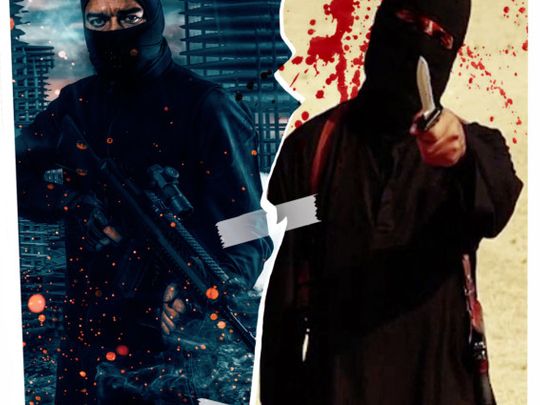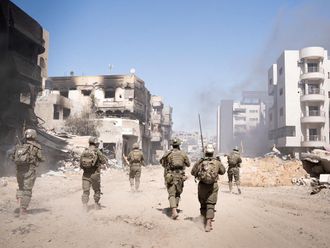
Many scholars of terrorism see worrying similarities between the rise of Daesh and that of white nationalist terrorism, seen most recently in the carnage in El Paso, Texas.
“The parallels are stunning,” said Will McCants, a prominent expert in the field.
And they are growing more notable with each new attack.
Experts say that the similarities are far from a coincidence. White nationalist terrorism is following a progression eerily similar to that of fundamentalism under the leadership of Daesh, in ways that do much to explain why the attacks have suddenly grown so frequent and deadly.
In both, there is the apocalyptic ideology that predicts — and promises to hasten — a civilisational conflict that will consume the world. There is theatrical, indiscriminate violence that will supposedly bring about this final battle, but often does little more than grant the killer a brief flash of empowerment and win attention for the cause.
There are self-starter recruits who, gathering in social media’s dark corners, drive their own radicalisation. And for these recruits, the official ideology may serve simply as an outlet for existing tendencies towards hatred and violence.
Differences between white nationalists and the Daesh remain vast. While Daesh leaders leveraged their followers’ zeal into a short-lived government, the new white nationalism has no formal leadership at all.
“I think a lot of people working on online extremism saw this coming,” said J.M. Berger, author of the book Extremism, and a fellow with VOX-Pol, a group that studies online extremism, referring to the similarities between white nationalism and the Daesh.
In retrospect, it is not hard to see why.
While white backlash to social and demographic change is nothing new, social media has allowed whites receptive to the most extreme version to find one another.
The world-shaking infamy of Daesh has made it a natural model even — perhaps especially — for extremists who see Muslims as enemies.
The feedback loop of radicalisation and violence, once triggered, can take on a terrible momentum all its own, with each attack boosting the online radicalisation and doomsday ideology that, in turn, drive more attacks.
The lessons are concerning. It is nearly impossible to eradicate a movement animated by ideas and decentralised social networks. Nor is it easy to prevent attacks when the perpetrators’ ideology makes nearly any target as good as the next, and requires little more training or guidance than opening a web forum.
And global changes that played a role in allowing the rise of Daesh are only accelerating, Berger warned — changes like the proliferation of social networks.
“When you open up a vast new arena for communication, it’s a vector for contagion,” he said.
The nihilism that increasingly defines global terrorism first emerged in the sectarian cauldron of the United States-occupied Iraq.
A washed-up criminal from Jordan, Abu Musab Al Zarqawi, exploited the chaos brought by the US-led invasion to slaughter occupiers and Iraqi Muslims alike, circulating videos of his deeds.
Al Qaida, for all its religious claims, had, like most terror groups, killed civilians in pursuit of worldly goals like a US withdrawal from the Middle East.
But Al Zarqawi seemed driven by sadism, a thirst for fame and an apocalyptic ideology that he is thought to have only vaguely grasped.
Al Qaida objected, fearing he would alienate the Muslim world and distract from extremism’s more concrete goals.
Al Zarqawi instead proved so popular among recruits that Al Qaida let him fight under its name. After his death, his group re-emerged as the Daesh.
His group’s unlikely rise hinted at a new approach to terrorism — and sheds light on why white nationalist terrorism is converging on similar beliefs and practices.
Most terrorists are not born wishing to kill. They have to be groomed. Where past terror groups had appealed to the political aspirations and hatreds of its recruits, Al Zarqawi’s found ways to activate a desire for bloodshed itself.
The US-led invasion of Iraq had seemed, for many Middle Easterners, to turn the world upside down. Al Zarqawi and later Daesh, instead of promising to turn it right-side-up, offered an explanation: The world was rushing towards an end-of-days battle between Muslims and infidels.
In that world, McCants wrote in 2015: “The apocalyptic recruiting pitch makes more sense.”
The ideological tracts, recruiting pitches and radicalisation tales of Daesh during its rise echo, almost word-for-word, those of the white nationalist terrorists of today.
For the latter, the world is said to be careening towards a global race war between whites and nonwhites.
The Camp of the Saints, a bizarre 1973 French novel that has since become an unofficial book of prophesy for many white nationalists, describes a concerted effort by non-white foreigners to overwhelm and subjugate Europeans, who fight back in a genocidal race war.
So-called manifestoes left by the terrorist attackers at Christchurch, New Zealand, and El Paso have warned of this coming war too. They also say their attacks were intended to provoke more racial violence, hastening the fight’s arrival.
Radicalisation requires little more than a community with like-minded beliefs, said Maura Conway, a terrorism scholar at Dublin City University. While white backlash to social and demographic change is nothing new, social media has allowed whites receptive to the most extreme version to find one another.
And, much like what Daesh had found, social media gave white extremists a venue on which to post videos of their exploits, where they would go viral, setting off the cycle again.
In 2015, Berger wrote that Daesh had been “the first group to employ these amplifying tactics on social media”. But, he added, “it will not be the last”.
Max Fisher writes The Interpreter, a news column and newsletter that explore the ideas and context behind major world events.










